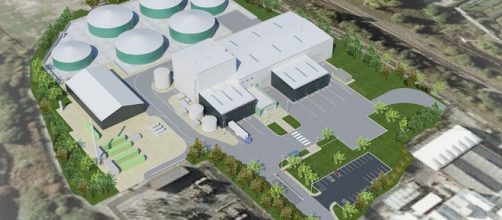A new waste treatment facility is expected to open next year in Northwich, based on the Renescience technology. This will be the first commercial full-scale Plant worldwide using this newly developed technology. The construction of the facility was financed by Renescience’s developers, Dong Energy who also built and is running hundreds of wind turbines in the Northern Sea.
The plant is expected to recycle 120,000 tons of waste per year, the equivalent of 110,000 households. Furthermore, the Northwich facility should generate a total of 5 megawatts of renewable electricity from the biogas, as well as large volumes of recyclable materials.
The plant itself has an economic impact on the community by generating 24 full-time jobs, plus over 150 people involved in its construction. If the Renescience technology is proved successful, more facilities will soon open in the UK and the rest of the EU.
The REnescience technology
The Renescience technology is based on four steps. In the first step, all residual MSW (municipal solid waste), both organic and inorganic, is put in tanks filled with warm water and enzymes, similar to those used in detergents. In the course of 12 hours, the enzymes accelerate the decomposition of the MSW: biodegradable materials become liquid and, as a consequence, they are easily separated from non-degradable ones.
This process is much simpler than others because it doesn’t require shredding waste and it has a higher rate of biomass capturing and recycling of materials, making it better for the environment but also for business.
At this point, the liquefied biodegradable content is separated and becomes bioliquid. Dependently on the final use of the bioliquid, further treatment may be needed. In fact, the bioliquid has a vast array of potential uses, ranging from biogas production to the production of chemicals as lactic acid and butanol, which can be also used as fuels. A second part of the MSW is called the 3-dimensional fraction, and it is constituted of metals, plastics and glass. This fraction is usually suitable for further sorting and then it is recycled, decreasing the amount of oil needed to produce other plastic.
Finally, the last part of the MSW, the so-called 2-dimensional fraction, contains textiles and plastic foils. As the previous one, this fraction can be recycled and used in the production of new plastic. Otherwise, it can be used replaced fossil fuels, as Refuse Derived Fuel (RDF) or Solid Recovered Fuel (SRF).
Benefits of the Renescience technology
The Renescience technology offers numerous advantages throughout the waste disposal process. First of all, Renescience is more efficient as the separation of waste into the different materials now happens at the industrial level and not in the households. Furthermore, every kind of organic and inorganic waste is incorporated into the process and can be re-used.
A further advantage is that the Renescience system can be integrated with clean energy power supply sources, in order to compensate for their intermittent nature. In fact, the MSW treated with the Renescience technology could be used to produce electricity or heat when the wind and solar plants are insufficient. Renescience is also cheaper and offers higher recycling rates than waste incineration plants or other technologies.


